Balkinization
an unanticipated consequence of
Jack M. Balkin
Balkinization Symposiums: A Continuing List
E-mail:
Jack Balkin:
jackbalkin at yahoo.com
Bruce Ackerman
bruce.ackerman at yale.edu
Ian Ayres
ian.ayres at yale.edu
Corey Brettschneider
corey_brettschneider at brown.edu
Mary Dudziak
mary.l.dudziak at emory.edu
Joey Fishkin
joey.fishkin at gmail.com
Heather Gerken heather.gerken at yale.edu
Abbe Gluck abbe.gluck at yale.edu
Mark Graber
mgraber at law.umaryland.edu
Stephen Griffin
sgriffin at tulane.edu
Jonathan Hafetz
jonathan.hafetz at shu.edu
Jeremy Kessler
jkessler at law.columbia.edu
Andrew Koppelman
akoppelman at law.northwestern.edu
Marty Lederman
msl46 at law.georgetown.edu
Sanford Levinson
slevinson at law.utexas.edu
David Luban
david.luban at gmail.com
Gerard Magliocca
gmaglioc at iupui.edu
Jason Mazzone
mazzonej at illinois.edu
Linda McClain
lmcclain at bu.edu
John Mikhail
mikhail at law.georgetown.edu
Frank Pasquale
pasquale.frank at gmail.com
Nate Persily
npersily at gmail.com
Michael Stokes Paulsen
michaelstokespaulsen at gmail.com
Deborah Pearlstein
dpearlst at yu.edu
Rick Pildes
rick.pildes at nyu.edu
David Pozen
dpozen at law.columbia.edu
Richard Primus
raprimus at umich.edu
K. Sabeel Rahmansabeel.rahman at brooklaw.edu
Alice Ristroph
alice.ristroph at shu.edu
Neil Siegel
siegel at law.duke.edu
David Super
david.super at law.georgetown.edu
Brian Tamanaha
btamanaha at wulaw.wustl.edu
Nelson Tebbe
nelson.tebbe at brooklaw.edu
Mark Tushnet
mtushnet at law.harvard.edu
Adam Winkler
winkler at ucla.edu
Compendium of posts on Hobby Lobby and related cases
The Anti-Torture Memos: Balkinization Posts on Torture, Interrogation, Detention, War Powers, and OLC
The Anti-Torture Memos (arranged by topic)
Recent Posts
The Fate of Bostock’s Formalism After $215 Million Spent on Anti-Trans Ads
Just A Few Blogs
ACS Blog
Alas, a Blog
Althouse
Arts and Letters Daily
Atrios (Eschaton)
Bill of Health
Buzzflash.com
Buzz Machine
Cato at Liberty
Juan Cole (Informed Comment)
Concurring Opinions
The Constitution in 2020
Corrente
Crooked Timber
Daily Howler
Daily Kos
Dana Boyd
Brad DeLong
Digby (Hullabaloo)
Discriminations
Daniel Drezner
Kevin Drum (Mother Jones)
Electrolite
En Banc
Eunomia (Daniel Larison)
Fafblog
Michael Froomkin (Discourse.net)
GovLab (Beth Noveck)
Rick Hasen (Election Law)
History News Network
How Appealing
Ignatz (Sam Heldman)
The Importance of (Ernie Miller)
Infolaw
Instapundit
International Economic Law and Policy Blog
IntLawGrrls
Jacob Levy
Jesus' General
Jurisdynamics
The Kitchen Cabinet
Mark Kleiman
Law Blog Central
Larry Lessig
Lawyers, Guns and Money
Liberal Oasis
Brian Leiter's Law School Reports
The Leiter Reports
Marginal Revolution
Megan McArdle
Memeorandum
Metafilter
Mirror of Justice
The New Republic
Newseum
No More Mister Nice Blog
Brendan Nyhan
Opinio Juris
Orcinus
The Originalism Blog
Pandagon
Passport (Foreign Policy)
Overcoming Bias
Political Animal (Washington Monthly)
Political Theory Daily Review
Political Wire (Taegan Goddard)
The Poor Man
Virginia Postrel
Prawfsblawg
Public Reason
Jonathan Rauch
Raw Story
Redstate
ReligiousLeftLaw.com
Reporters Committee For Freedom of the Press
Reproductive Rights Blog
Rothman's Roadmap to the Right of Publicity
SCOTUS Blog
Seeing the Forest
Clay Shirky
The Shifted Librarian
The Situationist
Larry Solum (Legal Theory)
Andrew Sullivan
Talking Points Memo
Talk Left
Tapped
Tbogg
TechPresident
The Paper Chase (Jurist)
Tom Paine
Tom Tomorrow (This Modern World)
Eve Tushnet
Uggabugga
University of Chicago Law School Faculty Blog
Unqualified Offerings
The Volokh Conspiracy
War and Piece (Laura Rozen)
Wampum
Oliver Willis
Wonkette
Written Description
Matthew Yglesias
Yin
Your Choice of Feeds
1. XML
powered by
2. Atom Feed
3. RSS 2.0
Wednesday, April 09, 2025
The Fate of Bostock’s Formalism After $215 Million Spent on Anti-Trans Ads
Guest Blogger
For the Balkinization Symposium on Legal Pathways Beyond Dobbs.
Neil S. Siegel Lacking
theoretical ambition in the current moment, I want to make a point about
methodological inconsistency that will include but extend beyond equal
protection law in the context of sex, sexual orientation, and gender identity. Last
Term, the U.S. Supreme Court decided United v. Rahimi, 144 S.Ct. 1889 (2024), holding that the Second Amendment permits someone
found by a court to pose a credible threat to the physical safety of another to
be temporarily disarmed. Justice Neil Gorsuch wrote a concurrence opining on
the proper method of constitutional interpretation. “Come to this Court with
arguments from text and history,” he wrote, “and we are bound to reason through
them as best we can.” “Faithful adherence to the Constitution’s original
meaning may be an imperfect guide,” he continued, “but I can think of no more
perfect one for us to follow.” In
writing those words, Justice Gorsuch appeared unembarrassed by their
inconsistency with the reasoning of several momentous majority opinions he
joined that term—none of which had a tenable basis in the text or original
meaning of the Constitution or the statute at issue. See Trump
v. United States, 144 S.Ct. 2312 (2024); Trump
v. Anderson, 144 S.Ct. 662 (2024); Fischer
v. United States, 144 S.Ct. 2176 (2024). The two Trump cases
were instead based on structural inferences, consequentialist reasoning, and
analogies to precedent. As the conservative originalist scholar William
Baude opined, “Trump v. Anderson’s holding lacked any
real basis in text and history,” and “[t]he court’s reasoning [in Trump v. United
States] went well beyond any specific part of the Constitution or any
determinate constitutional tradition.” As for Fischer, Justice Amy Coney
Barrett wrote in dissent that the Court “does textual backflips to find some
way—any way—to narrow the reach” of the criminal provision in question. There is a lesson here, and it also applies when
President Trump does not benefit from the Court’s deviations from textualism
and originalism. When the political stakes are high, most of the conservative
Justices cannot be counted on to be methodologically consistent—to be
principled. It can be frustrating to be a student of the current Court because an
unprecedented number of Justices purports to assign first-class interpretive
status to relatively strict versions of textualism and originalism and
second-class interpretive status to structural, doctrinal, and consequentialist
modalities of interpretation. It can be demoralizing to be a student of this
Court because those same Justices do not appear to really mean it when the
consequences of applying that proclaimed interpretive hierarchy are unpalatable. A similar dynamic seems likely to unfold regarding
the Court’s increasingly formalistic, biologically focused understanding of sex
discrimination. That understanding leaves much to be desired. For one thing, it
is contrary to extensive case law that polices sex classifications reflecting
or reinforcing traditional sex-role stereotypes. See, e.g., United
States v. Virginia, 518 U.S. 515 (1996). For another thing, it is harmful
to human beings, including women, sexual-orientation minorities, and
transgender individuals. See, e.g., Pavan
v. Smith, 582 U.S. 563, 568 (2017) (Gorsuch, J., dissenting)
(defending “a birth registration regime based on biology” that denied married
same-sex couples the same legal recognition as married opposite-sex couples). What
is more, when that understanding occasionally helps such groups, the Court appears
unlikely to consistently stick with it. Consider, for example, United
States v. Skrmetti, where the issue is whether the Equal Protection
Clause permits a Tennessee law that forbids all medical treatments intended to
allow “a minor to identify with, or live as, a purported identity inconsistent
with the minor’s sex” or to treat “purported discomfort or distress from a
discordance between the minor’s sex and asserted identity.” The question
presented in Skrmetti would seem to be answered in the negative by the formalistic,
biologically focused understanding of sex discrimination animating Justice
Gorsuch’s majority opinion in Bostock
v. Clayton County, Georgia, 590 U.S. 644 (2020). In Bostock, the Court held that an employer
who fires an employee just for being gay or transgender violates federal
employment discrimination law. Considering the case of “an employer who fires a transgender person who was identified as a male at
birth but who now identifies as a female,” Justice Gorsuch reasoned that “[i]f
the employer retains an otherwise identical employee who was identified as female at birth, the employer intentionally penalizes a person identified
as male at birth for traits or actions that it tolerates in an employee
identified as female at birth.” Chief Justice John Roberts joined Justice
Gorsuch’s opinion. According to Bostock’s logic, the state law
at issue in Skrmetti uses a facial sex classification. “Put simply,” the
Solicitor General advised the Court, “an adolescent assigned female at birth
cannot receive puberty blockers or testosterone to live as a male, but an adolescent
assigned male at birth can.” Yet, the U.S. Court of Appeals for the Sixth
Circuit, in an opinion
by Chief Judge Jeffrey Sutton, denied that the state law included a facial sex
classification and, applying only deferential scrutiny, upheld it as rational.
Remarkably, Chief Judge Sutton distinguished Bostock as a case in which
“the employers fired adult employees because their behavior did not match
stereotypes of how adult men or women dress or behave.” Valid concerns about
gender stereotyping were exactly what were absent from the majority opinion in Bostock.
(And, in any event, such stereotyping is present in Skrmetti on the very
face of the law, which states that Tennessee has an “interest in encouraging
minors to appreciate their sex” and in prohibiting treatments “that might
encourage minors to become disdainful of their sex.”) Even so, at oral
argument, Chief Justice Roberts seemed to agree with Chief
Judge Sutton. Justice Gorsuch—who is typically not shy at argument—just sat
there, saying nothing. What has changed between Bostock in 2020 and Skrmetti
today? The legalist in me searches for a principled
distinction between the two cases, let alone between Bostock and the
conclusion that the Equal Protection Clause already subjects discrimination
against gay or transgender people to heightened scrutiny. The realist in me registers that in 2020, Donald
Trump did not condemn transgender Americans. By contrast, in 2024, the Republican
Party won control of the political branches after spending “nearly
$215 million on television ads fanning fear and hatred of trans
people,” a “figure that doesn’t include cable or streaming ads.” The legalist in me wonders whether the Court will
surprise us in Skrmetti. I live to learn. The realist in me cautions that no one should expect the Court
to consistently vindicate its stated interpretive commitments. The pull of
politics and outcomes seems too strong for most Justices to resist. Neil S. Siegel, David
W. Ichel Distinguished Professor of Law and Professor of Political Science, Duke Law School, siegel@law.duke.edu
Posted
9:30 AM
by Guest Blogger [link]
Books by Balkinization Bloggers

Gerard N. Magliocca, The Actual Art of Governing: Justice Robert H. Jackson's Concurring Opinion in the Steel Seizure Case (Oxford University Press, 2025)

Linda C. McClain and Aziza Ahmed, The Routledge Companion to Gender and COVID-19 (Routledge, 2024)

David Pozen, The Constitution of the War on Drugs (Oxford University Press, 2024)

Jack M. Balkin, Memory and Authority: The Uses of History in Constitutional Interpretation (Yale University Press, 2024)
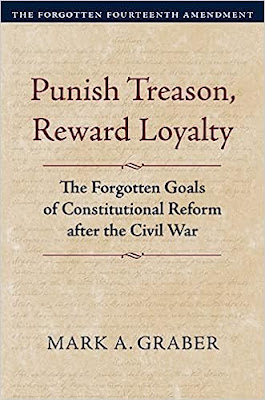
Mark A. Graber, Punish Treason, Reward Loyalty: The Forgotten Goals of Constitutional Reform after the Civil War (University of Kansas Press, 2023)
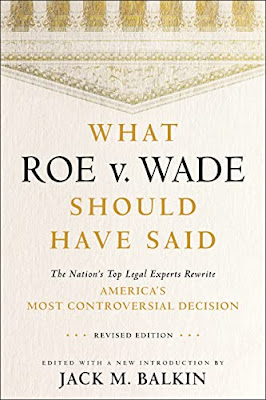
Jack M. Balkin, What Roe v. Wade Should Have Said: The Nation's Top Legal Experts Rewrite America's Most Controversial Decision - Revised Edition (NYU Press, 2023)

Andrew Koppelman, Burning Down the House: How Libertarian Philosophy Was Corrupted by Delusion and Greed (St. Martin’s Press, 2022)

Gerard N. Magliocca, Washington's Heir: The Life of Justice Bushrod Washington (Oxford University Press, 2022)
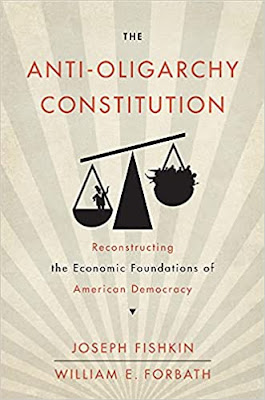
Joseph Fishkin and William E. Forbath, The Anti-Oligarchy Constitution: Reconstructing the Economic Foundations of American Democracy (Harvard University Press, 2022)
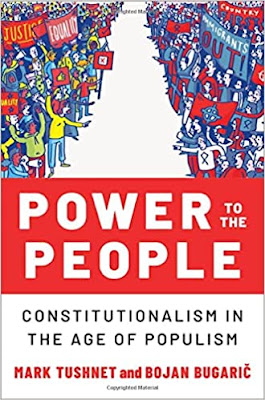
Mark Tushnet and Bojan Bugaric, Power to the People: Constitutionalism in the Age of Populism (Oxford University Press 2021).

Mark Philip Bradley and Mary L. Dudziak, eds., Making the Forever War: Marilyn B. Young on the Culture and Politics of American Militarism Culture and Politics in the Cold War and Beyond (University of Massachusetts Press, 2021).

Jack M. Balkin, What Obergefell v. Hodges Should Have Said: The Nation's Top Legal Experts Rewrite America's Same-Sex Marriage Decision (Yale University Press, 2020)

Frank Pasquale, New Laws of Robotics: Defending Human Expertise in the Age of AI (Belknap Press, 2020)

Jack M. Balkin, The Cycles of Constitutional Time (Oxford University Press, 2020)

Mark Tushnet, Taking Back the Constitution: Activist Judges and the Next Age of American Law (Yale University Press 2020).

Andrew Koppelman, Gay Rights vs. Religious Liberty?: The Unnecessary Conflict (Oxford University Press, 2020)

Ezekiel J Emanuel and Abbe R. Gluck, The Trillion Dollar Revolution: How the Affordable Care Act Transformed Politics, Law, and Health Care in America (PublicAffairs, 2020)

Linda C. McClain, Who's the Bigot?: Learning from Conflicts over Marriage and Civil Rights Law (Oxford University Press, 2020)
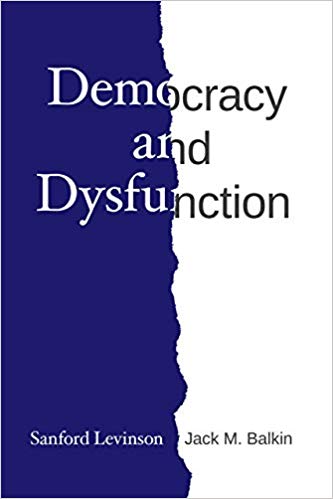
Sanford Levinson and Jack M. Balkin, Democracy and Dysfunction (University of Chicago Press, 2019)

Sanford Levinson, Written in Stone: Public Monuments in Changing Societies (Duke University Press 2018)

Mark A. Graber, Sanford Levinson, and Mark Tushnet, eds., Constitutional Democracy in Crisis? (Oxford University Press 2018)

Gerard Magliocca, The Heart of the Constitution: How the Bill of Rights became the Bill of Rights (Oxford University Press, 2018)

Cynthia Levinson and Sanford Levinson, Fault Lines in the Constitution: The Framers, Their Fights, and the Flaws that Affect Us Today (Peachtree Publishers, 2017)

Brian Z. Tamanaha, A Realistic Theory of Law (Cambridge University Press 2017)

Sanford Levinson, Nullification and Secession in Modern Constitutional Thought (University Press of Kansas 2016)

Sanford Levinson, An Argument Open to All: Reading The Federalist in the 21st Century (Yale University Press 2015)

Stephen M. Griffin, Broken Trust: Dysfunctional Government and Constitutional Reform (University Press of Kansas, 2015)

Frank Pasquale, The Black Box Society: The Secret Algorithms That Control Money and Information (Harvard University Press, 2015)

Bruce Ackerman, We the People, Volume 3: The Civil Rights Revolution (Harvard University Press, 2014)
Balkinization Symposium on We the People, Volume 3: The Civil Rights Revolution

Joseph Fishkin, Bottlenecks: A New Theory of Equal Opportunity (Oxford University Press, 2014)

Mark A. Graber, A New Introduction to American Constitutionalism (Oxford University Press, 2013)

John Mikhail, Elements of Moral Cognition: Rawls' Linguistic Analogy and the Cognitive Science of Moral and Legal Judgment (Cambridge University Press, 2013)

Gerard N. Magliocca, American Founding Son: John Bingham and the Invention of the Fourteenth Amendment (New York University Press, 2013)

Stephen M. Griffin, Long Wars and the Constitution (Harvard University Press, 2013)

Andrew Koppelman, The Tough Luck Constitution and the Assault on Health Care Reform (Oxford University Press, 2013)

James E. Fleming and Linda C. McClain, Ordered Liberty: Rights, Responsibilities, and Virtues (Harvard University Press, 2013)
Balkinization Symposium on Ordered Liberty: Rights, Responsibilities, and Virtues

Andrew Koppelman, Defending American Religious Neutrality (Harvard University Press, 2013)

Brian Z. Tamanaha, Failing Law Schools (University of Chicago Press, 2012)

Sanford Levinson, Framed: America's 51 Constitutions and the Crisis of Governance (Oxford University Press, 2012)

Linda C. McClain and Joanna L. Grossman, Gender Equality: Dimensions of Women's Equal Citizenship (Cambridge University Press, 2012)

Mary Dudziak, War Time: An Idea, Its History, Its Consequences (Oxford University Press, 2012)

Jack M. Balkin, Living Originalism (Harvard University Press, 2011)

Jason Mazzone, Copyfraud and Other Abuses of Intellectual Property Law (Stanford University Press, 2011)

Richard W. Garnett and Andrew Koppelman, First Amendment Stories, (Foundation Press 2011)

Jack M. Balkin, Constitutional Redemption: Political Faith in an Unjust World (Harvard University Press, 2011)

Gerard Magliocca, The Tragedy of William Jennings Bryan: Constitutional Law and the Politics of Backlash (Yale University Press, 2011)

Bernard Harcourt, The Illusion of Free Markets: Punishment and the Myth of Natural Order (Harvard University Press, 2010)

Bruce Ackerman, The Decline and Fall of the American Republic (Harvard University Press, 2010)
Balkinization Symposium on The Decline and Fall of the American Republic

Ian Ayres. Carrots and Sticks: Unlock the Power of Incentives to Get Things Done (Bantam Books, 2010)

Mark Tushnet, Why the Constitution Matters (Yale University Press 2010)
Ian Ayres and Barry Nalebuff: Lifecycle Investing: A New, Safe, and Audacious Way to Improve the Performance of Your Retirement Portfolio (Basic Books, 2010)
.jpg)
Jack M. Balkin, The Laws of Change: I Ching and the Philosophy of Life (2d Edition, Sybil Creek Press 2009)

Brian Z. Tamanaha, Beyond the Formalist-Realist Divide: The Role of Politics in Judging (Princeton University Press 2009)
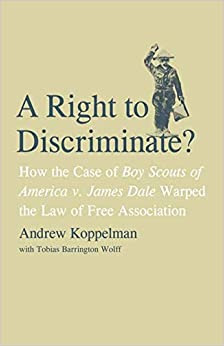
Andrew Koppelman and Tobias Barrington Wolff, A Right to Discriminate?: How the Case of Boy Scouts of America v. James Dale Warped the Law of Free Association (Yale University Press 2009)

Jack M. Balkin and Reva B. Siegel, The Constitution in 2020 (Oxford University Press 2009)
Heather K. Gerken, The Democracy Index: Why Our Election System Is Failing and How to Fix It (Princeton University Press 2009)

Mary Dudziak, Exporting American Dreams: Thurgood Marshall's African Journey (Oxford University Press 2008)

David Luban, Legal Ethics and Human Dignity (Cambridge Univ. Press 2007)

Ian Ayres, Super Crunchers: Why Thinking-By-Numbers is the New Way to be Smart (Bantam 2007)

Jack M. Balkin, James Grimmelmann, Eddan Katz, Nimrod Kozlovski, Shlomit Wagman and Tal Zarsky, eds., Cybercrime: Digital Cops in a Networked Environment (N.Y.U. Press 2007)

Jack M. Balkin and Beth Simone Noveck, The State of Play: Law, Games, and Virtual Worlds (N.Y.U. Press 2006)

Andrew Koppelman, Same Sex, Different States: When Same-Sex Marriages Cross State Lines (Yale University Press 2006)
Brian Tamanaha, Law as a Means to an End (Cambridge University Press 2006)
Sanford Levinson, Our Undemocratic Constitution (Oxford University Press 2006)
Mark Graber, Dred Scott and the Problem of Constitutional Evil (Cambridge University Press 2006)
Jack M. Balkin, ed., What Roe v. Wade Should Have Said (N.Y.U. Press 2005)
Sanford Levinson, ed., Torture: A Collection (Oxford University Press 2004)
Balkin.com homepage
Bibliography
Conlaw.net
Cultural Software
Writings
Opeds
The Information Society Project
BrownvBoard.com
Useful Links
Syllabi and Exams